In a Nutshell: The Staccato C offers a versatile, highly shootable package that can flex into multiple roles.
Staccato has reintroduced the Staccato C as their flagship do-it-all pistol — touting it as the answer to concealed carry, duty, and home defense.
But can one pistol truly do it all? If so, does this evolution from Staccato have what it takes to fill those roles?
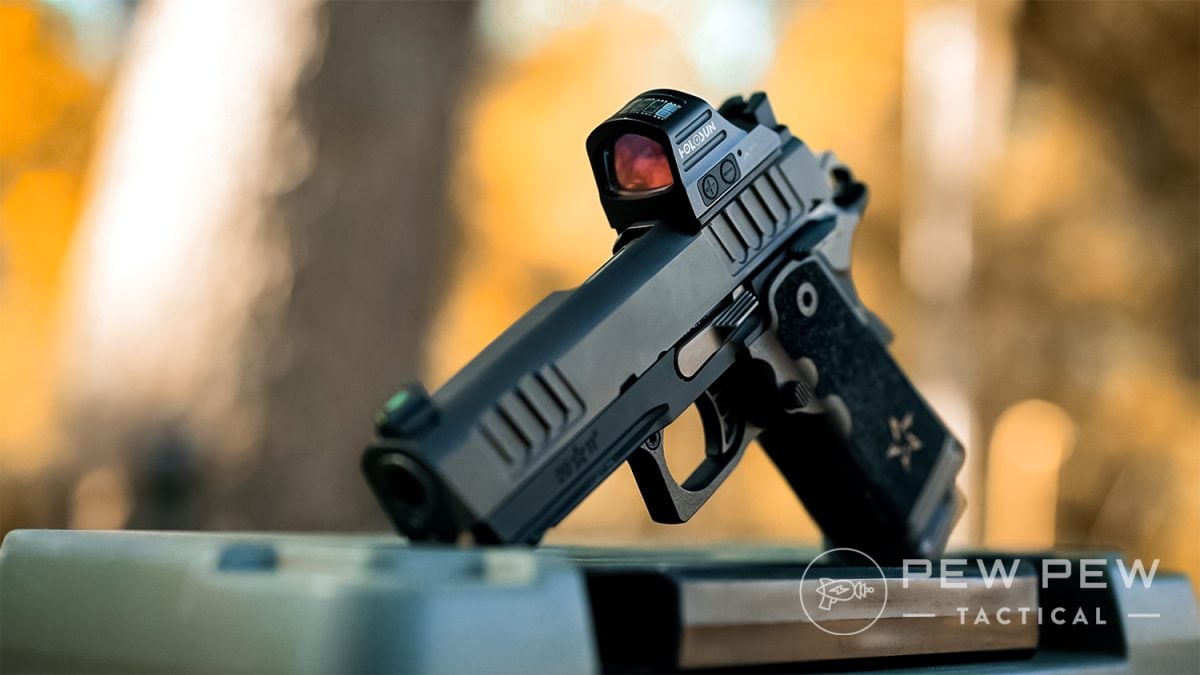
We set out to find the answer. We grabbed a new Staccato C and took to the range to see how this 2011 performed.
From ergonomics to accuracy to the very controversial drop-safe topic, we have all the details and more below, so keep reading!
Table of Contents
Loading…
Pros & Cons
| Pros | Cons |
| Excellent trigger | Expensive magazines |
| Aggressive grip texture | Mag release tough for smaller hands |
| Fiber optic sights | Pricey |
| Updated magazine design | Drop safety may be issue for some |
| Excellent safety ergonomics |
Specs & Features
Specs
- Caliber: 9mm
- Barrel Length: 4”
- Length: 7.7 inches
- Width: 1.2 inches
- Weight: 26 oz (unloaded)
- Magazine Capacity: Two 15-round magazines or two 17-round magazines
Features
- Available in either compact grip (15 rounds) or full-size grip (17 rounds)
- Wide frame
- Optics ready plate included
Prices accurate at time of writing
Prices accurate at time of writing
-
25% off all OAKLEY products - OAKLEY25
Copied! Visit Merchant
How We Tested the Staccato C
For this review, we set up the Staccato C with the accessories needed to squeeze out every ounce of shooting performance. We mounted a Holosun 507C-X2 using the included optics plate. This allowed us to test the gun’s accuracy, firing 5-round groups starting at 7 yards.
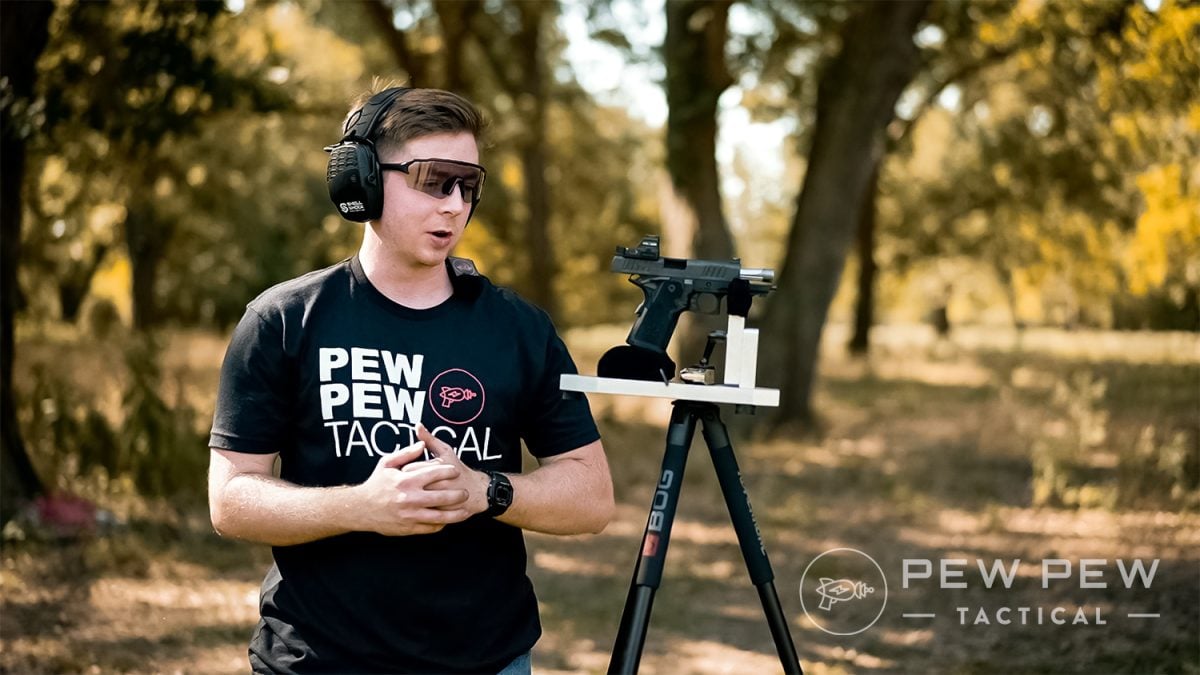
We shot 800 rounds of AAC 115g, Blazer 115g, Magtech 124g, Staccato 124g, and Sig V-Crown 124g to gauge reliability across multiple brands and both FMJ and JHP rounds.
Additionally, we used a few tools to help us bring you the most accurate review. First, we shot the Staccato C with a ransom rest to gauge accuracy and remove user error. Second, we tested the trigger three times with a Lyman Digital Trigger Gauge to get the average trigger pull.
9mm Ammo in Stock
Staccato C History
Staccato’s new C isn’t the first C Staccato has produced — not to be confused with the single-stack 8+1 Staccato C.
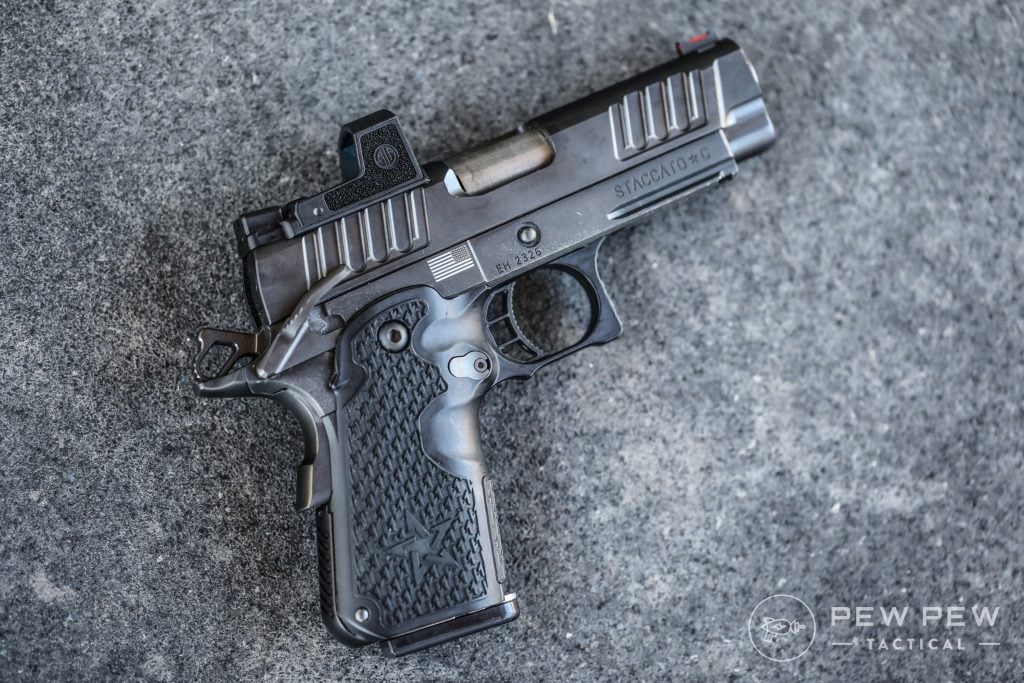
The original single-stack C was followed by the C2, which featured a double-stack 16-round magazine. Many shooters loved the upgrade to the C2, which offered a higher capacity and larger grip compared to the thin, low-capacity single-stack C.
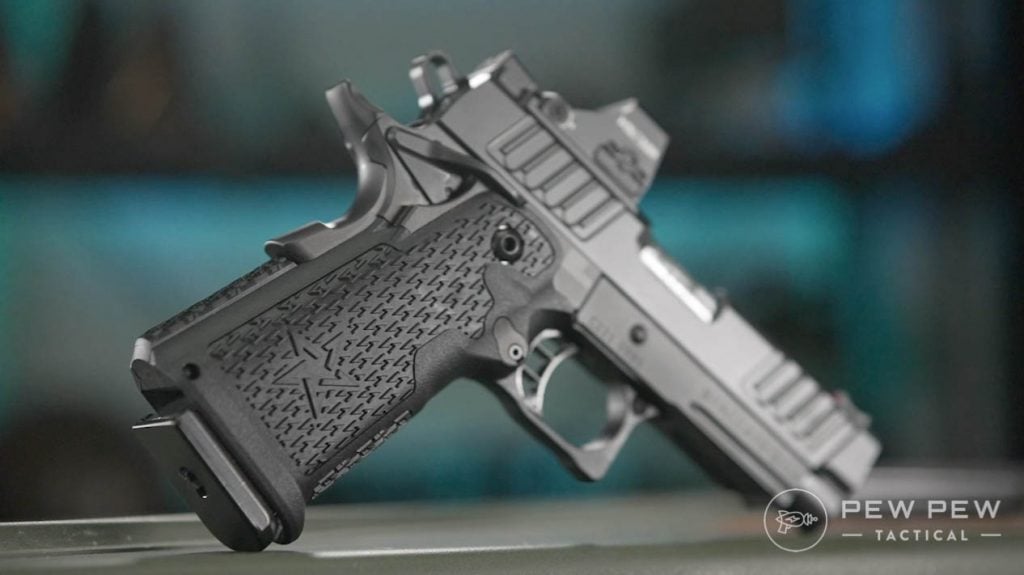
The C2 reigned as Staccato’s compact-carry champion until the release of the CS, which offered a shorter 3.5-inch barrel – still boasting a 16-round capacity.
The CS was verbally well received by those looking for a high-capacity 2011 carry pistol. Along with the CS came Staccato’s new, thinner magazine design, which has since been updated from a 16-round capacity to a 15-round.
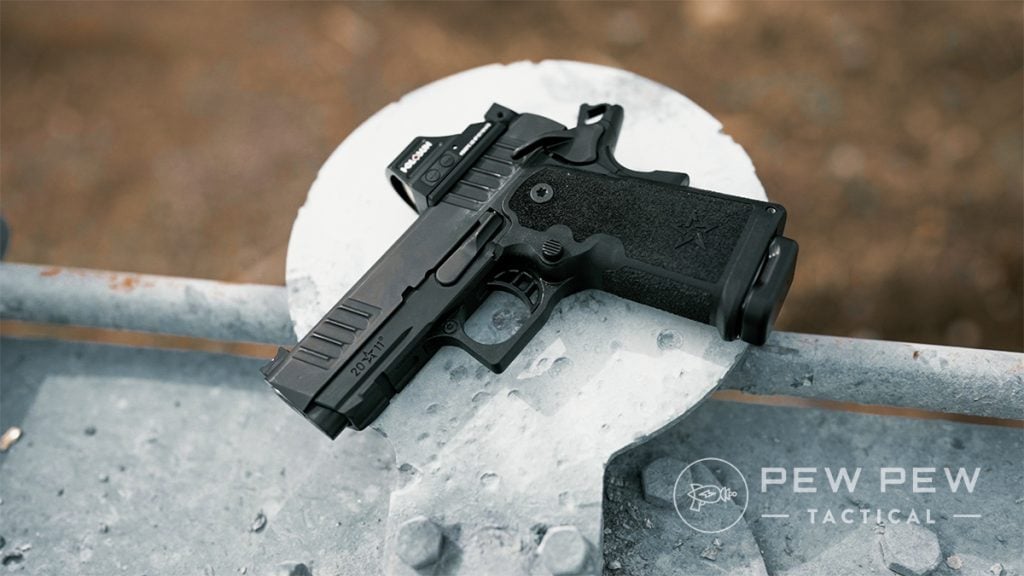
Keeping the intended purpose of the CS in mind, some users desired a longer barrel for a softer recoil impulse and a more “keel” effect when carried inside the waistband. Certain law enforcement agencies have a minimum barrel length requirement for a duty pistol of 4 inches.
Alas, Staccato created the new C, giving users a longer barrel length than the CS while retaining magazine interchangeability. All CS and C models share magazine compatibility with the slightly reduced 15-round magazine.
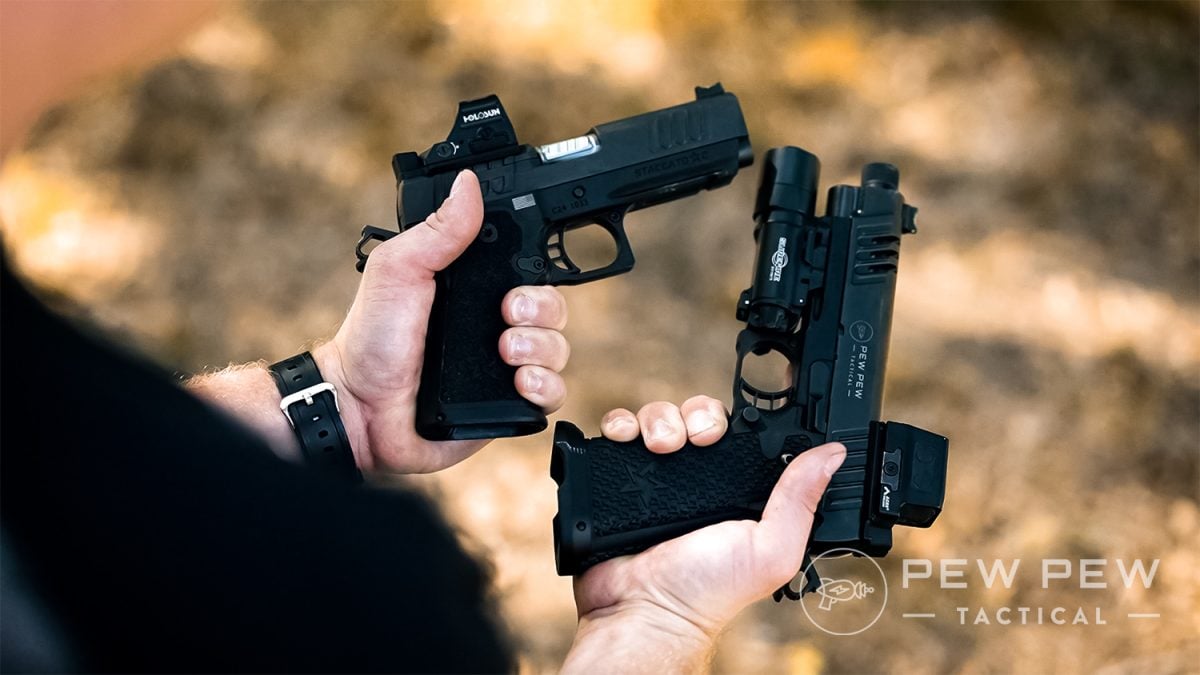
Staccato stated the reduction in capacity by 1 round, with the new spring design and material, will lend to an easier load with a full magazine and a longer service life for each magazine. Time will tell if this redesign holds true. Still, any company that intentionally reduces the magazine capacity for an extended service life must have good data and testing to back such a decision.
Ergonomics: Fit & Feel
The frame texture on the Staccato C is notable for its aggressive, sandpaper-like grip.
While this texture provides enough friction to lock the gun firmly into the hand during rapid strings of fire, it doesn’t irritate the skin, making it a comfortable option for concealed carry. The texture covers nearly 360 degrees around the grip and extends high onto the frame, ensuring solid support for the off-hand when shooting.
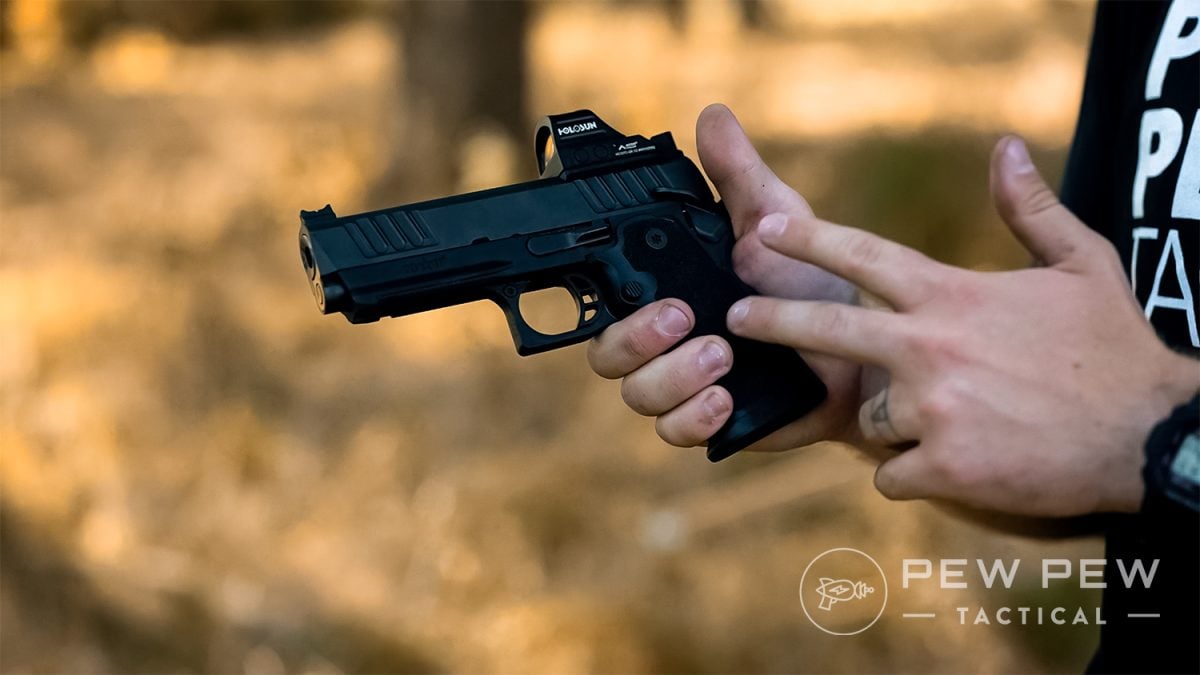
Additionally, a slightly extended lip at the bottom of the grip provides a comfortable place for the pinky finger to rest, improving control and stability during shooting.
Safety
One of the standout features of the Staccato C is its well-designed grip and thumb safety. As someone who began their pistol journey on the 1911 platform, I have always struggled with grip safeties failing to disengage properly and thumb safeties being too stiff or small.
The Staccato C addresses these issues effectively.
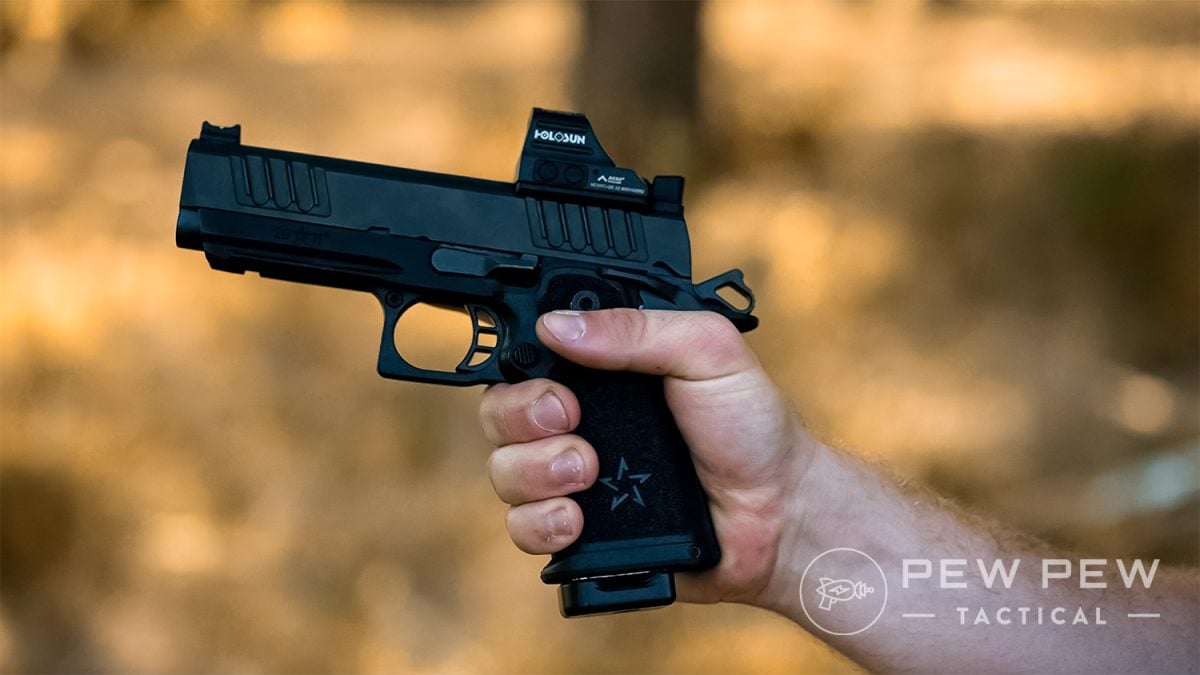
The thumb safety is highly intuitive and can be easily disengaged when presenting the pistol from the holster, providing confidence during quickdraws. As previously mentioned, many of the 1911s I shot during the early years of my career had a combination of small, stiff, poorly designed thumb safeties that were difficult to engage.
That said, the thumb safety on the Staccato C doesn’t suffer from these ailments. The pressure needed to engage and disengage the thumb safety is the perfect balance to maintain safety while carrying the pistol, but not so tough you struggle to disengage during the draw.
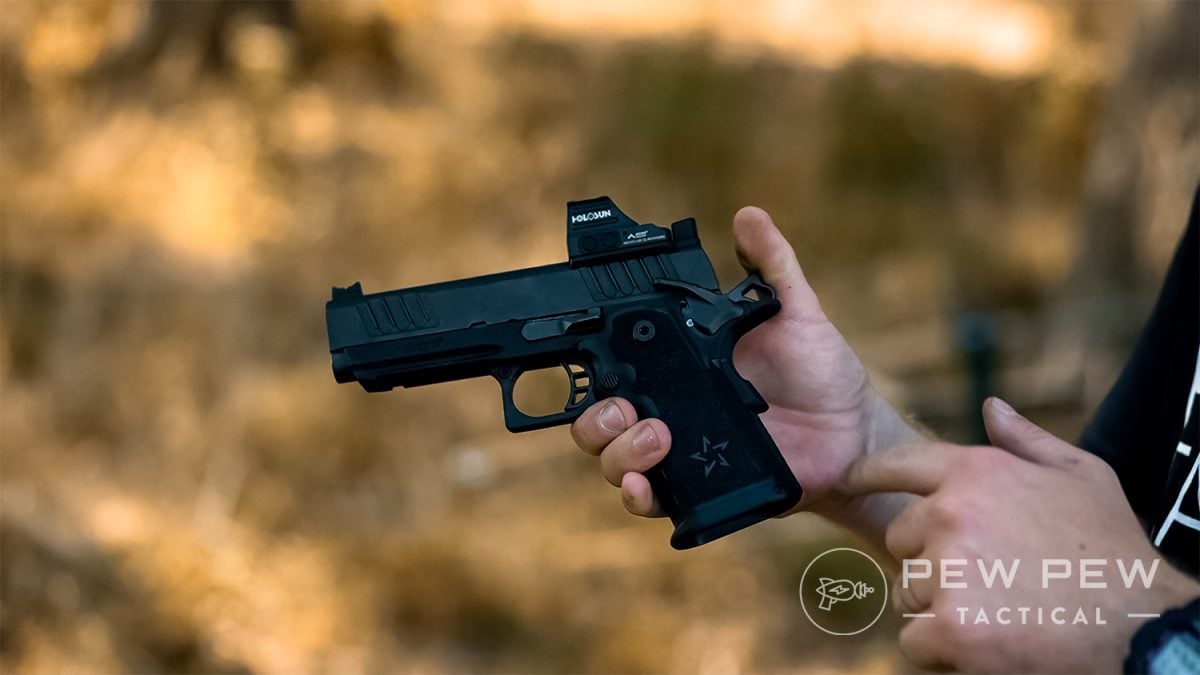
Its grip safety is generous and somewhat lenient in its design and usage, requiring only moderate pressure to engage the trigger action. This ensures that even if you don’t achieve a perfect grip, you can still fire the weapon effectively.
I prefer this type of leniency in the engagement of a 1911/2011 grip safety, as I have experienced in the past with other guns a difficult time maintaining the perfect amount of pressure on the grip safety to shoot the pistol, especially shooting single-handedly.
Other Controls
However, the magazine release on the Staccato C might challenge some users.
Even after over 800+ rounds, the release remains stiff. Its small, circular design demands precise finger placement and can be difficult to depress unless your finger is perfectly centered on the release.
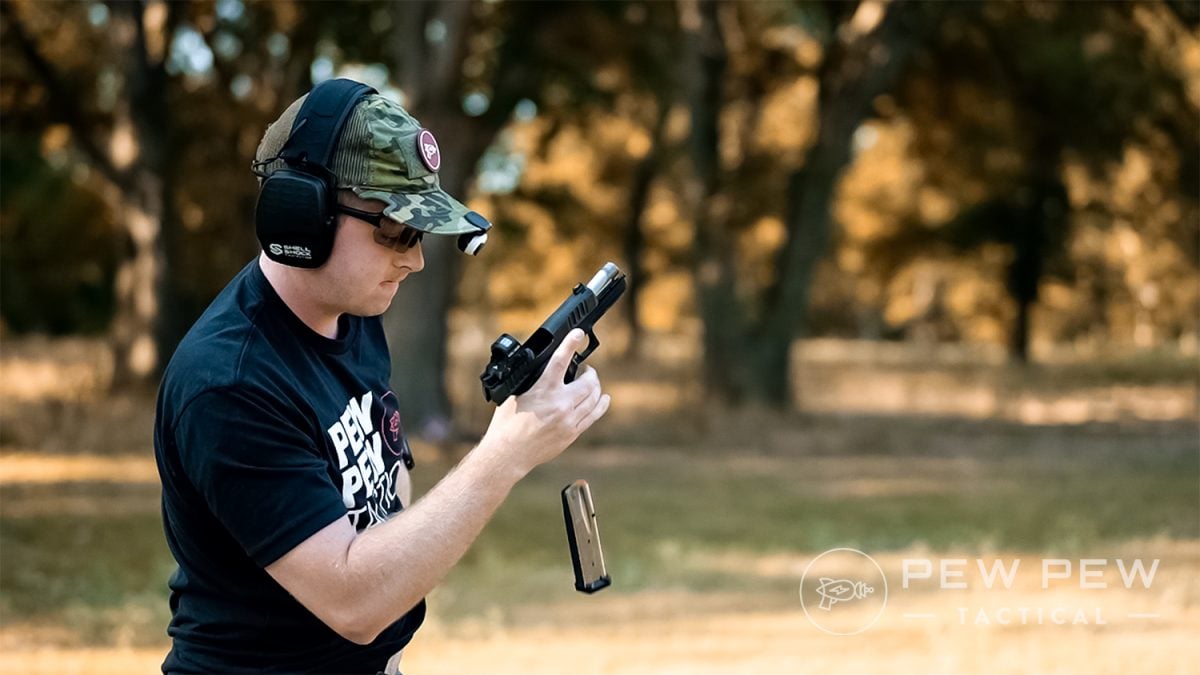
This can be particularly problematic for shooters with smaller hands when attempting to depress the magazine release with the dominant hand thumb.
To overcome this difficulty, a technique shift of depressing the magazine release with the support hand thumb may be in order. As a sample size of one with medium-sized hands, these critiques may not apply to someone with larger hands and longer thumbs.
For most users, unless you have larger-than-average hands, the slide catch won’t be accessible with the firing hand alone.
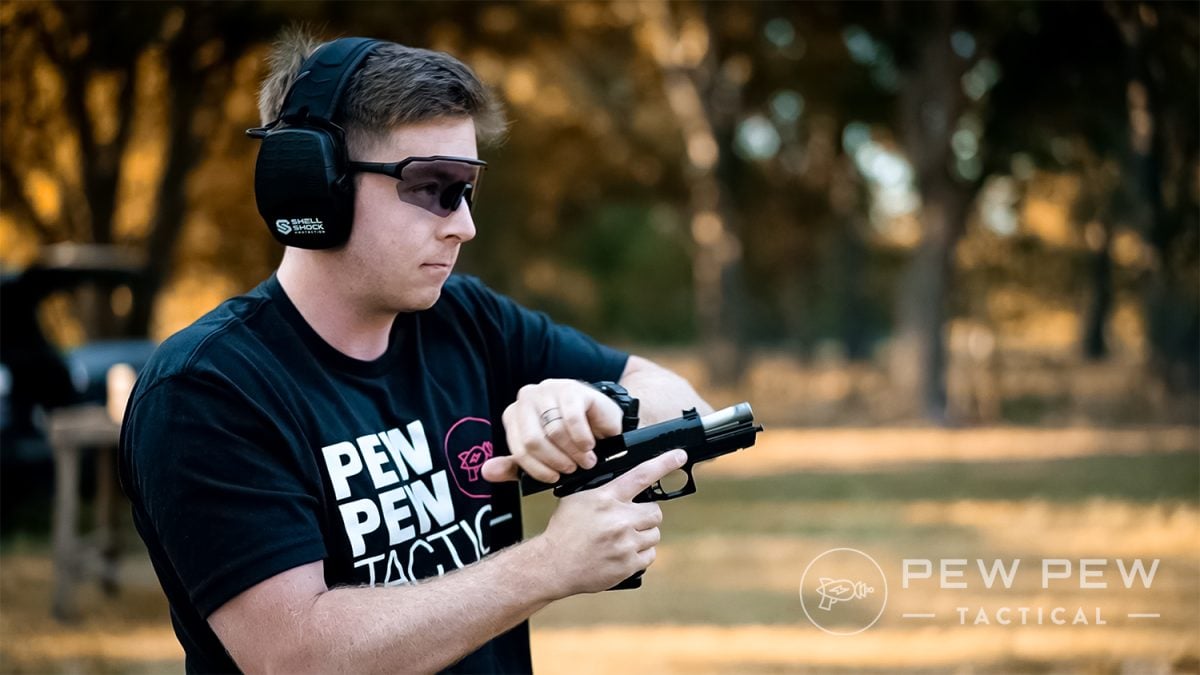
When performing an empty reload, you’ll likely need to use your support hand thumb to engage the slide catch or manually rack the slide. Fortunately, the ridged ledge on the slide catch makes this process easy and intuitive.
The combination of easy slide racking and the ridged slide catch results in a pistol that is simple to lock to the rear for reloading or clearing malfunctions.
Slide Design
The slide design on the Staccato C is another feature that contributes to its ergonomic appeal.
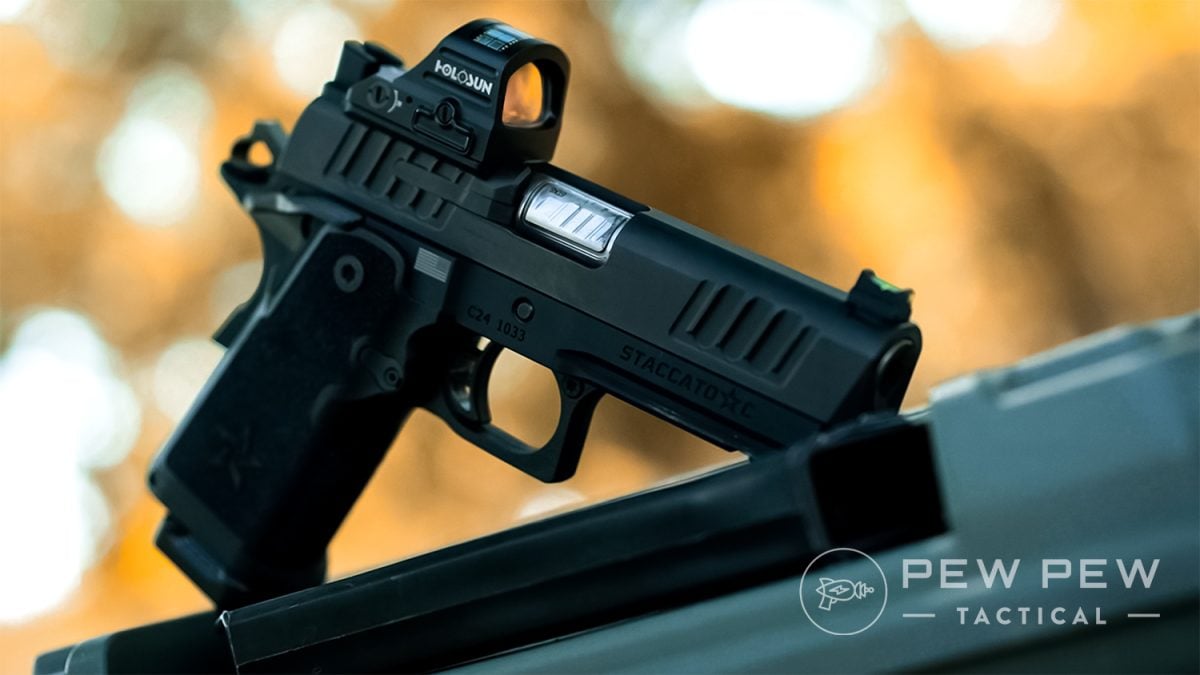
Its X-serrations are deep enough to provide a solid grip, giving you full control over the slide whether you’re racking it or performing a press check. The recoil spring weight is also calibrated to make the slide incredibly easy to manipulate, which is particularly beneficial during extended shooting sessions or high-stress scenarios.
As intimidating as the Staccato C may look, the smooth, light slide rack combined with the easy-to-manipulate X-serrations make a shooting package that even someone with a weaker grip can utilize.
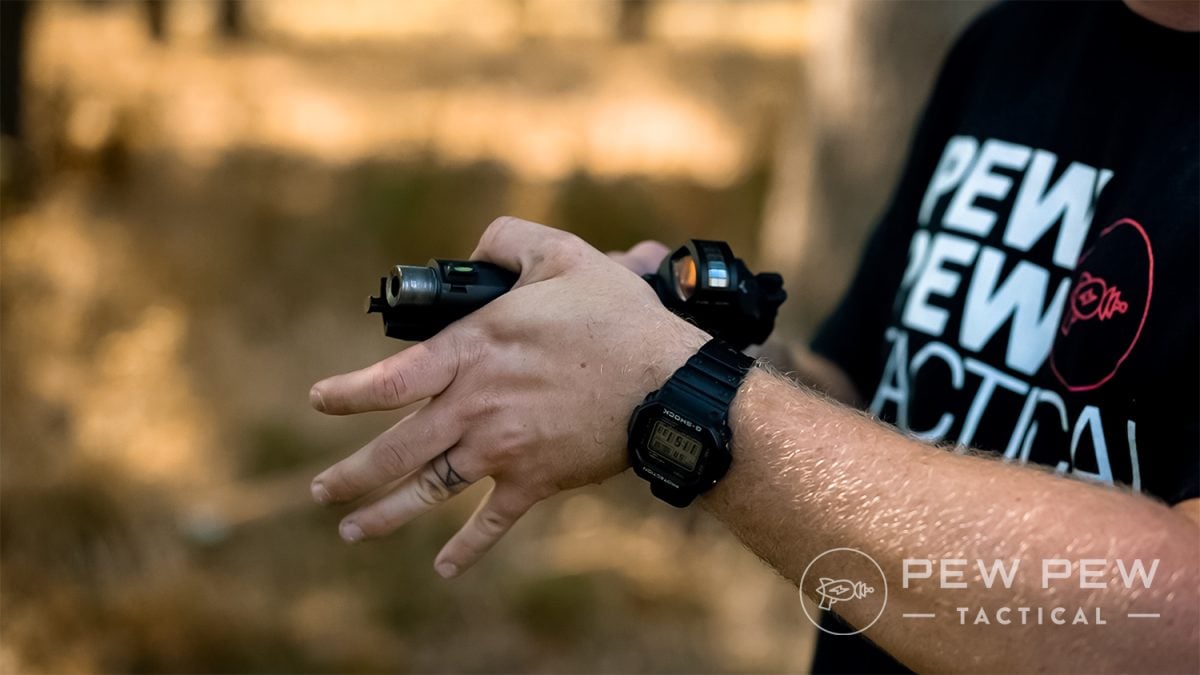
The included optics plate integrates backup iron sights for those using optics, so you don’t have to worry about adding a new sight with the correct height after optic installation.
The plate mounts to the slide first, with the optic secured on top. Thankfully, the optic doesn’t sit too tall and maintains a reasonably low profile, considering how beefy the optics plate system is.
Additionally, the factory sights are Dawson Fiber Optic, with multiple color options available, providing shooters with enhanced visibility for faster target acquisition.
How Does the Staccato C Shoot?
The shooting performance of the Staccato C is nothing short of excellent.
While the recoil impulse isn’t as flat as the Compensated XC or even the full-size P, it’s still incredibly soft. Even when shooting longer strings of fire, there was nothing harsh about the slide cycling between shots.
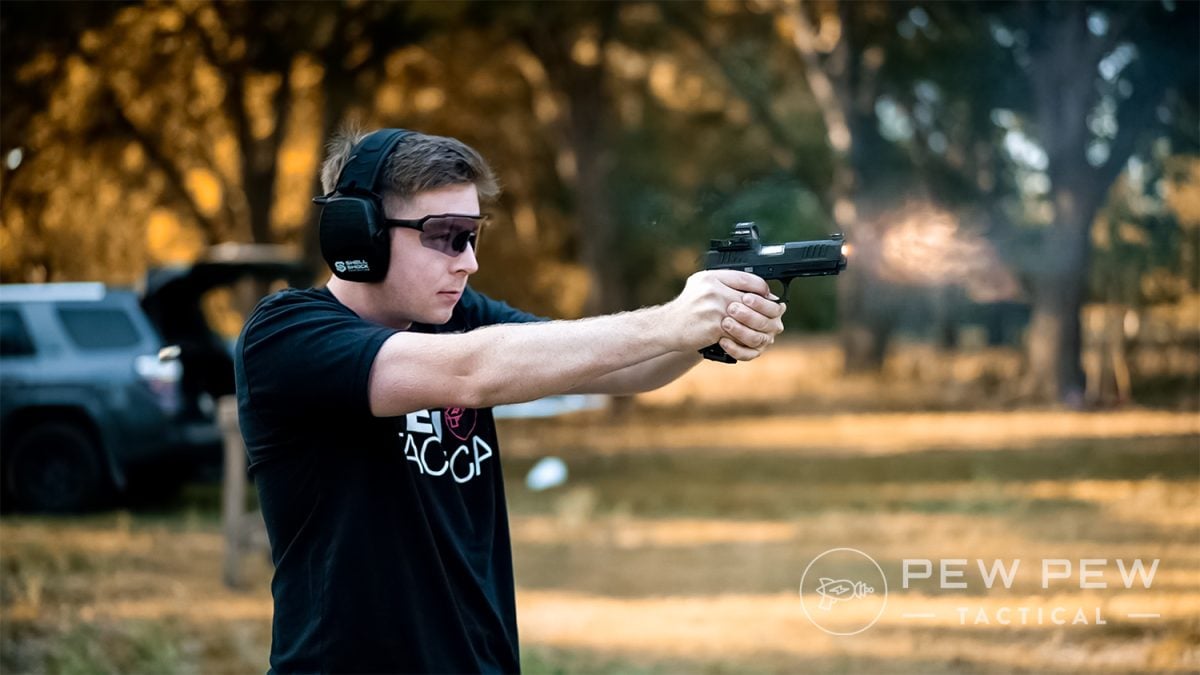
I spent most of my time running the pistol on USPSA open targets around the 7- to 15-yard mark and steel at 20 to 25 yards. The most interesting thing I noticed when shooting the C is the gun will shoot as fast as you allow it to go.
With a tight optic zero and visual discipline, you can easily place rounds exactly where you want them to go extremely quickly. I believe this to be the case due to the light trigger design and previously mentioned recoil impulse. The trigger is a near-perfect “duty” trigger for a 1911/2011.
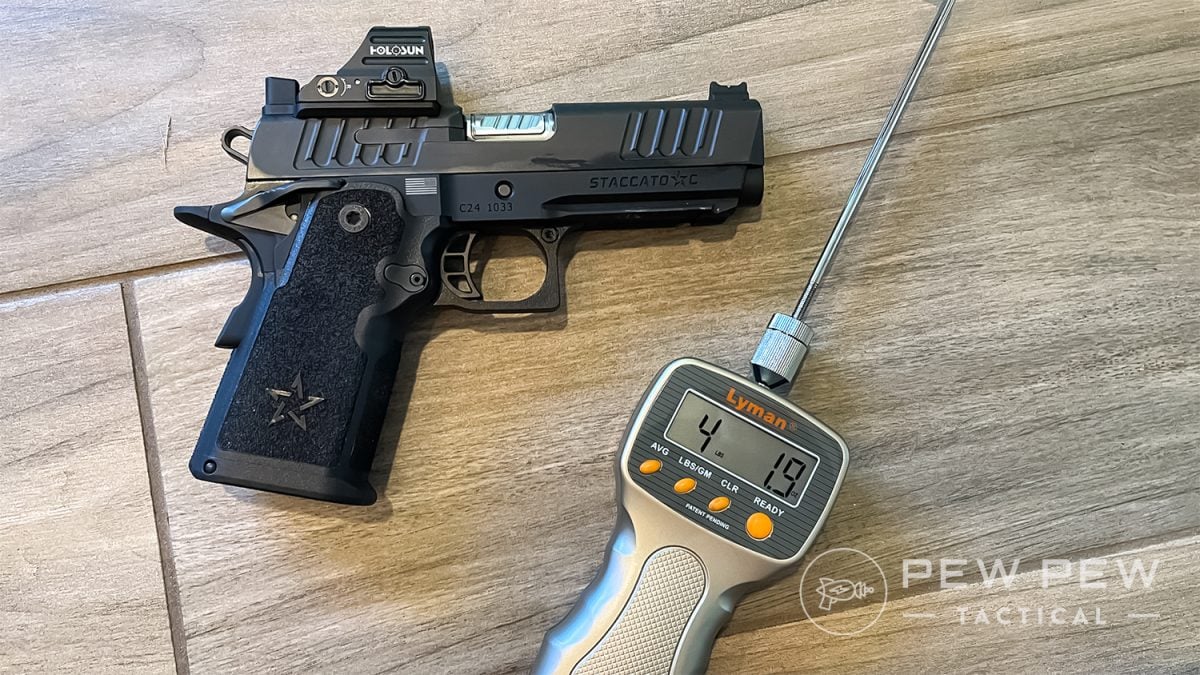
Using a digital gauge, our average pull weight was 4lb, 1.9oz. It has the smallest amount of take-up before reaching a defined wall. If the user presses straight back, it will achieve a hammer drop with no creep past the wall.
This trigger design truly is the highlight of the Staccato platform, and the C continues this legacy in a trigger weight that many deem appropriate for a duty/carry gun.
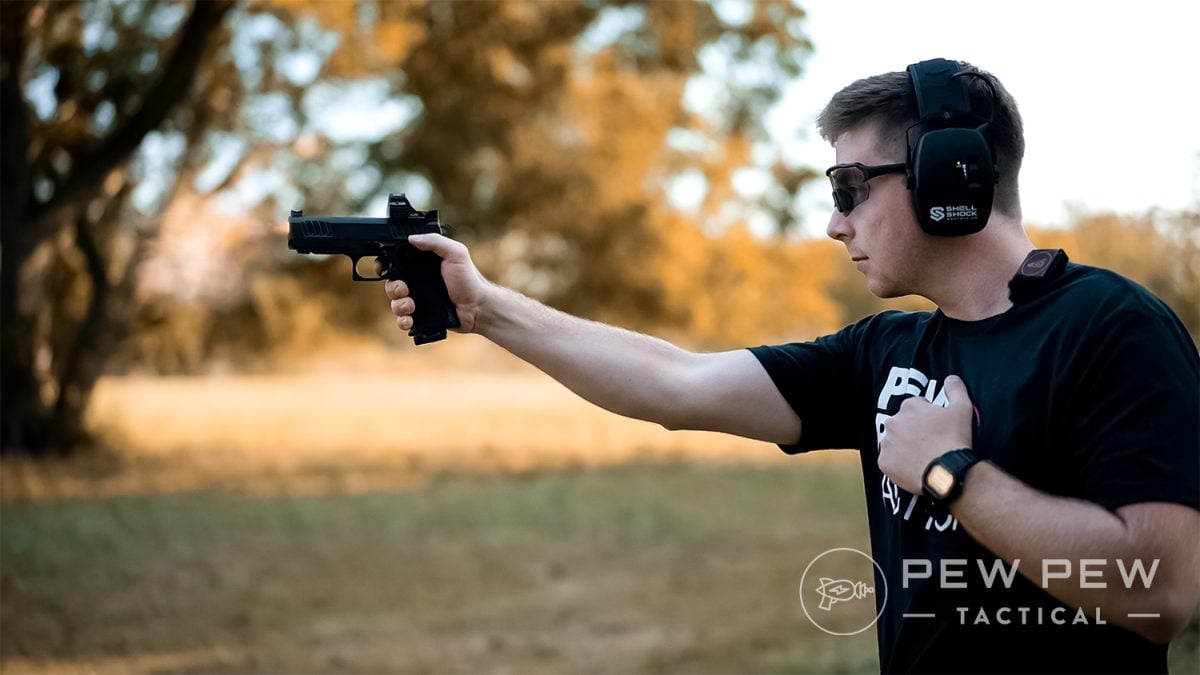
During target transitions, I felt like the gun seemed to float as I rode the recoil to the next target.
That said, some users may not like the “bouncy” feeling of this recoil impulse; however, I found when I applied correct grip fundamentals and focused on precise points on each target, I was able to engage and shoot extremely quickly and have a high level of accuracy and shot accountability.
Accuracy
To test the accuracy of the Staccato C, we utilized five different types of ammo with five rounds each at the 7-yard line. To remove as much of the shooter from the equation as possible, a ransom rest on a tripod was used to bench the pistol.
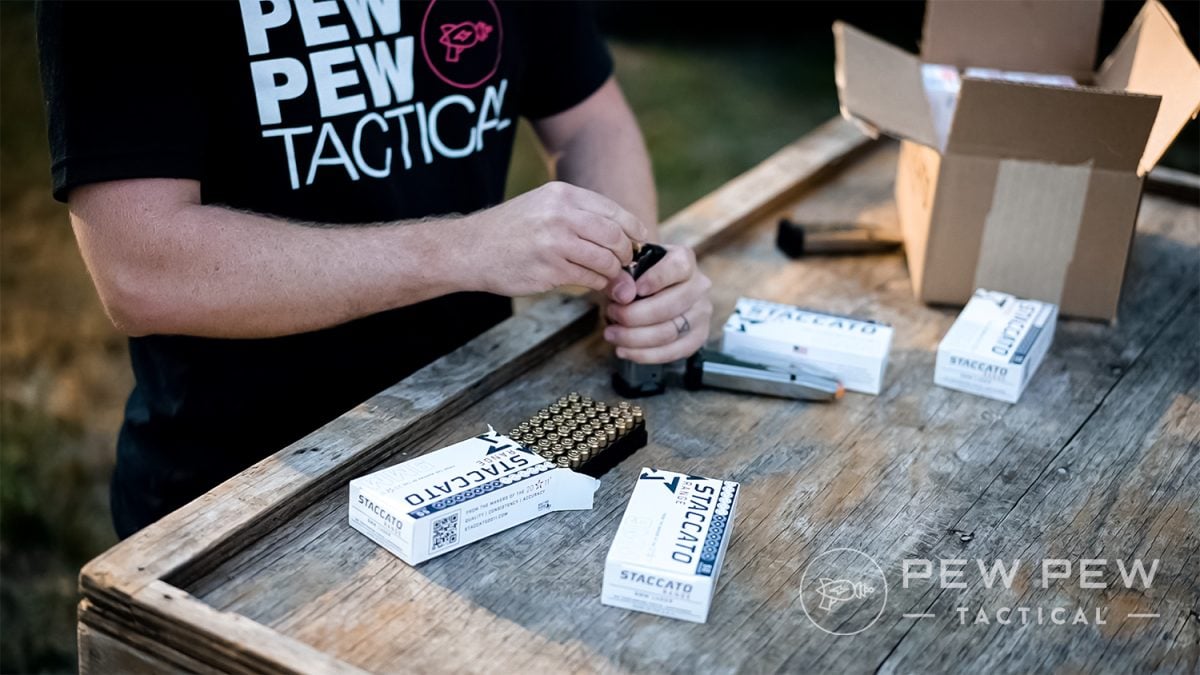
Ammo used included:
- AAC 115g
- Blazer 115g
- Magtech 124g
- Staccato 124g
- Sig V-Crown 124g
Our accuracy results were excellent, as to be expected, with the thick, fluted 4-inch barrel and crisp trigger.
Every group was less than 1 inch at 7 yards, with the best group going to the defensive Sig V crown ammo, with all five rounds hitting a 3-round touching hole. These types of results certainly boost confidence, knowing that the only limitation to the accuracy potential of the pistol falls on the user.
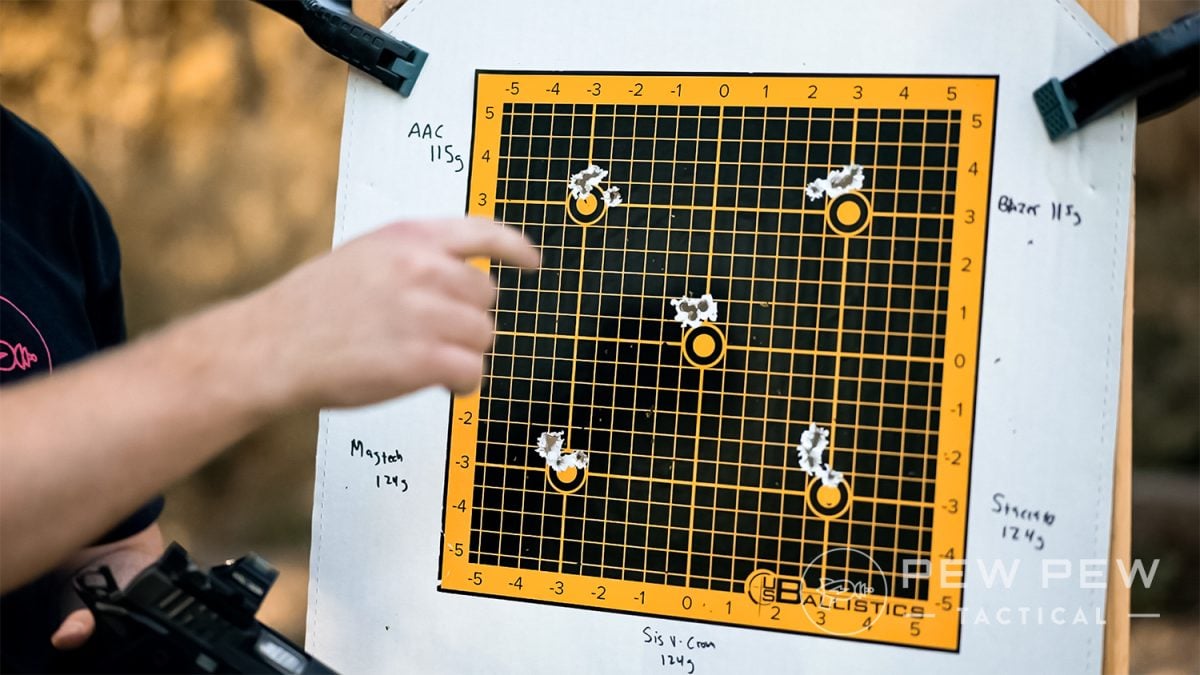
Reliability
Most of the 800+ rounds fired through the Staccato C were the 124g Staccato FMJ range ammunition. Alongside the Staccato Ammo, we shot a handful of AAC 115g, Blazer 115g, and Magtech 115g during the accuracy testing of the gun.
The Staccato C and associated Staccato range ammo functioned 100% flawlessly, with zero malfunctions. I properly oiled the Staccato before the testing began but did not re-apply any oil during the testing process.
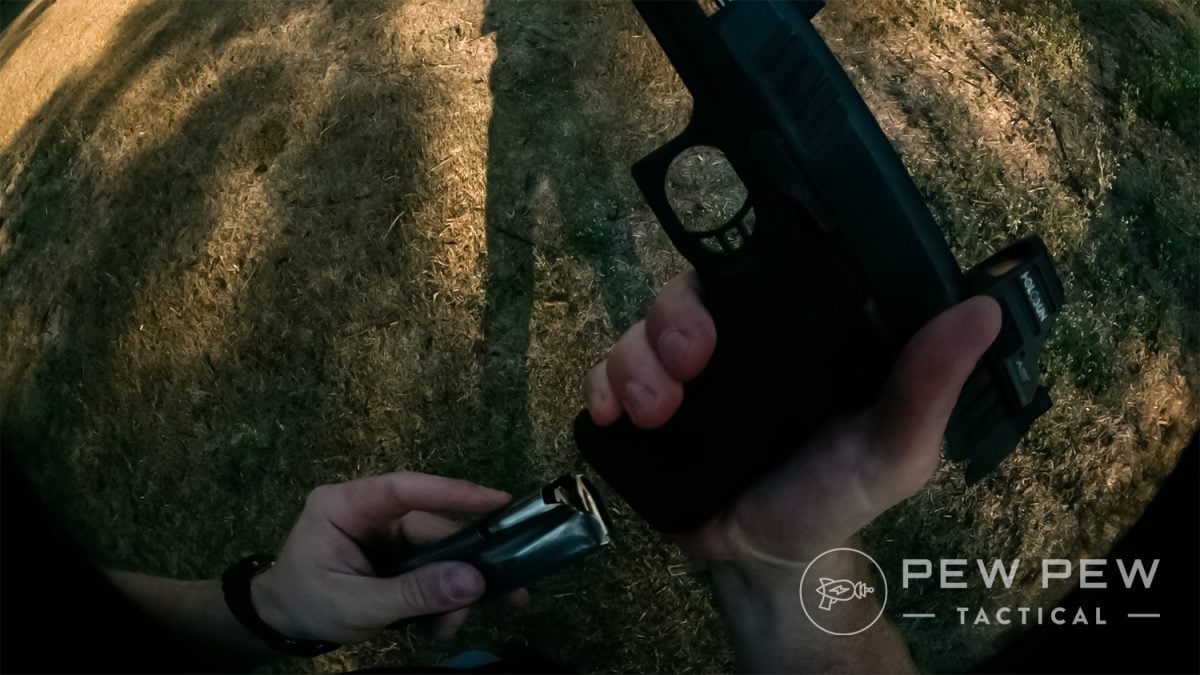
While it is not entirely necessary to avoid adding lubrication, I like to evaluate how well a gun continues to run if a bit dirty. This accounts for situations like a multi-day class with a high round count.
At the end of the 800 rounds, the gun didn’t feel sluggish or like it was fighting gunk and build-up. So, I would assume the Staccato C would have been easily able to truck along at least another few hundred rounds before needing to be re-oiled or cleaned.
On the topic of reliability…
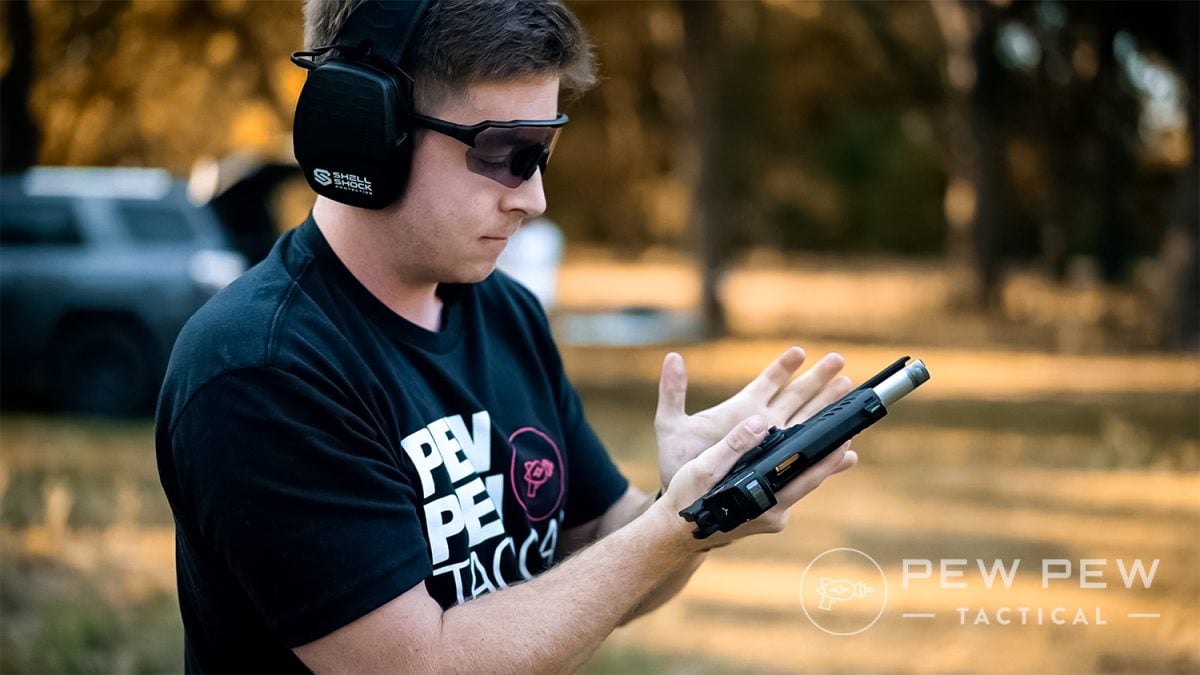
With 2011s in particular, the history of magazine reliability has been less than stellar. Early in my shooting days, I would see competitors taking their 2011 magazines apart after dropping them in the dirt during a reload to clean the inside of the mag to ensure reliability.
If a firearm magazine can’t be dropped repeatedly on the ground during training, the gun probably isn’t worth investing in a carry or duty role.
So, of course, we did what any good tester would do: drop some mags into the dirt! We experienced no issues or malfunctions after dropping the newly redesigned Staccato C/CS 15-round magazines into dirt and gravel environments.
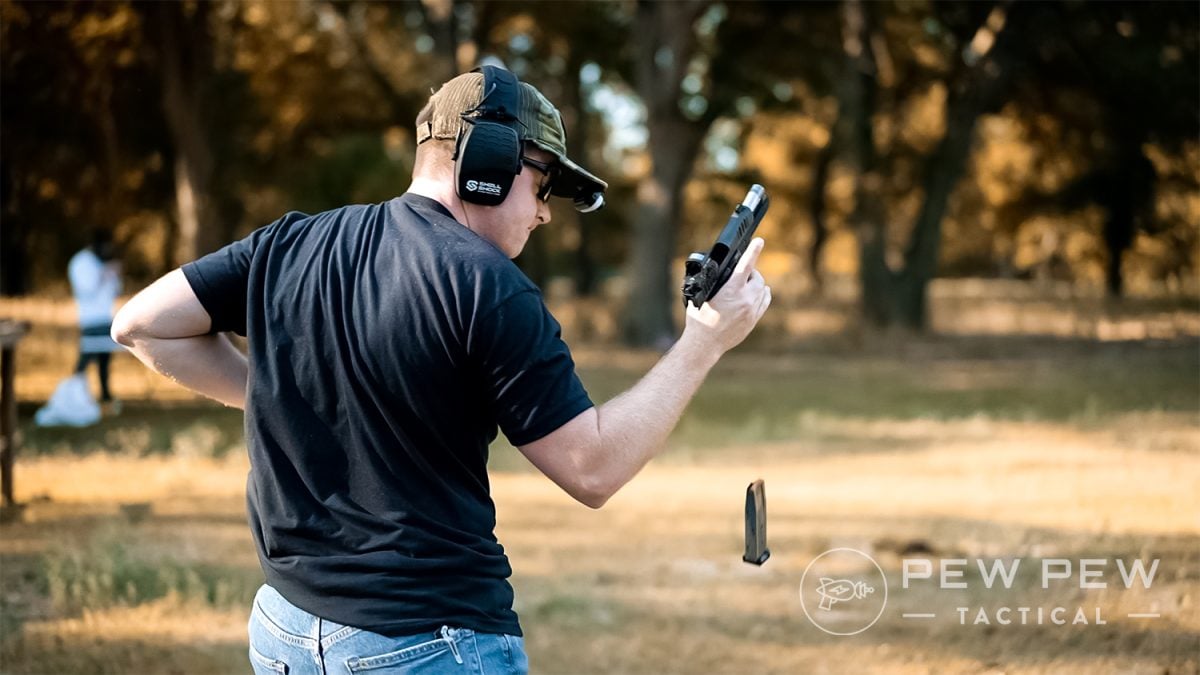
I think Staccato has done an excellent job pioneering the way forward in the magazine reliability department for the 2011 platform.
Staccato C Drop Safety: Let’s Talk About It
A topic that is divisive in the 2011/1911 gun community is the issue of “drop safety.”
If you are unfamiliar with the discussion, most, if not all, series 70 1911/2011 pistols are not 100% drop-safe. Even with the manual and grip safety engaged, if a round is in the chamber and the pistol falls on the muzzle at the correct height, there is a high probability the round will fire.
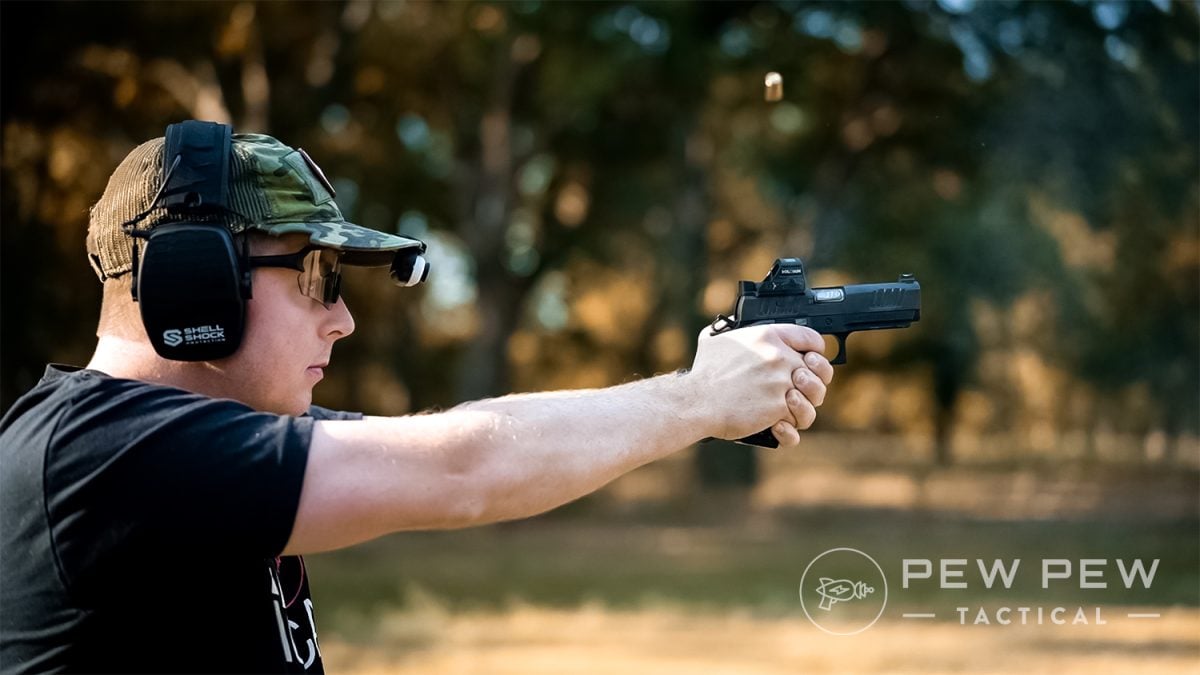
This is due to the free-floating firing pin and lack of a firing pin block that many modern pistol designs include. This safety feature is left out in many cases to maintain the amazing trigger pull many have come to love with the 1911/2011 platform.
Staccato pistols are no different in this regard.
Ultimately, the choice is up to the user whether they feel comfortable carrying/using a pistol with this drawback. Many LE Agencies across the U.S. have approved the Staccato for duty use, while some have not due to drop safety risk.
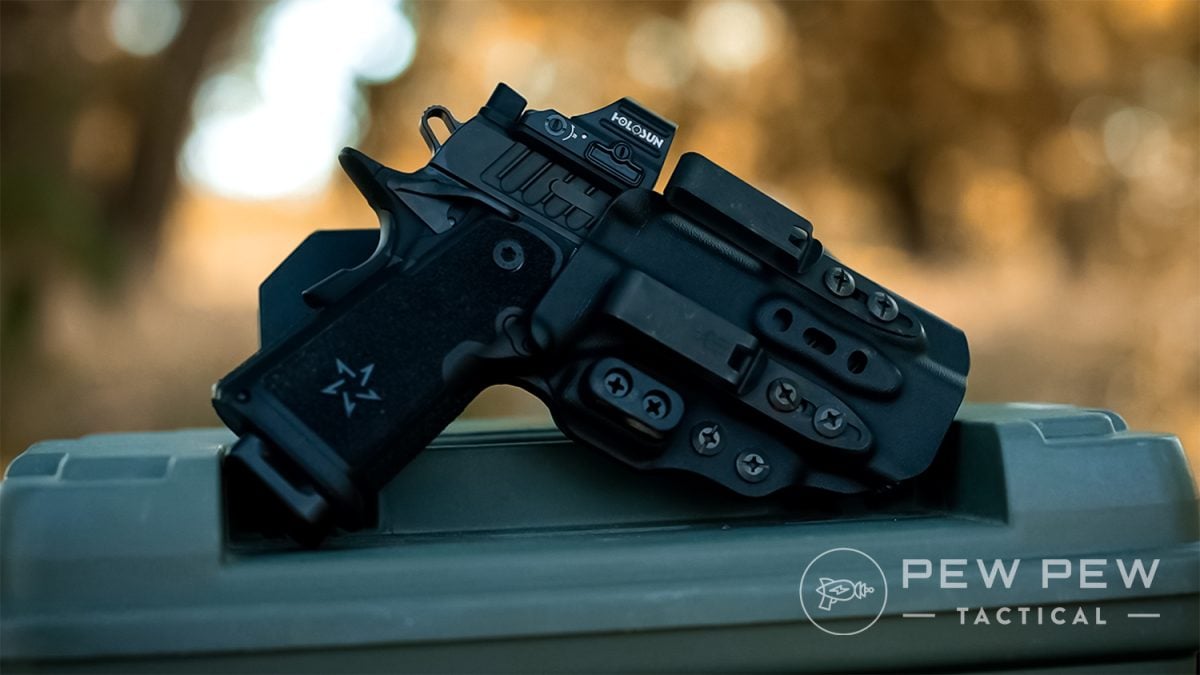
An honest review would not be complete without disclaimers that may not be easy to hear, but this should be considered with all the other amazing features we discussed about the Staccato C above.
What Sets the Staccato C Apart?
Staccato has taken the things many have loved about the 1911 and evolved it to fit the modern demands.
The 2011 is an entirely different shooting experience if all you have ever shot is striker-fired service-type weapons. 2011 pistols, in this case, the Staccato C, have a sort of elegance that simply cannot be ignored.
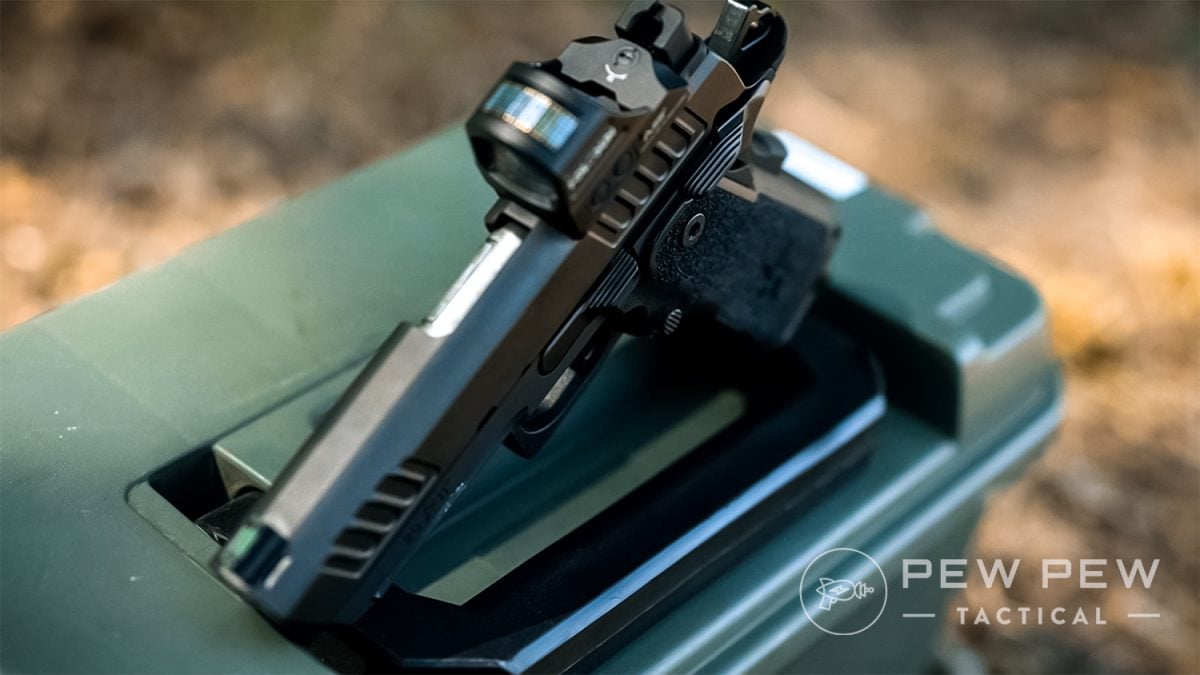
Optics ready, durable, reliable without a strict cleaning schedule, and still maintaining the integrity of the beloved 1911 trigger press are some of the ways Staccato has pulled the venerable 1911 into the modern world.
If you have the cash and want to invest the time learning the 2011 platform, the Staccato C is a good option. You’ll get a pistol that feels large enough to be competitive with full-sized pistols but compact enough to conceal.
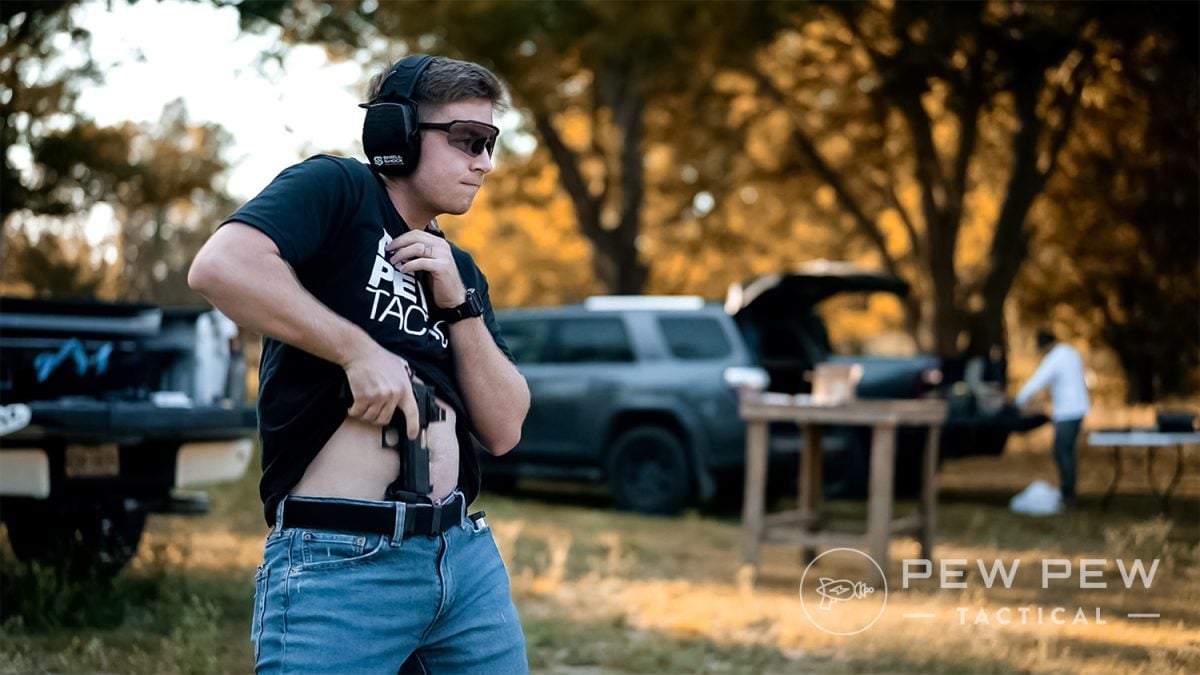
During the extent of this testing with the Staccato C, we exclusively utilized Tenicor Holsters to get the best performance in concealment and accessibility. The Velo5 proved effective and kept the Staccato C tight to the body while offering modularity and giving me enough clearance to get a full firing grip on the pistol during the draw.
Having quality holsters available immediately is a huge benefit for those considering the Staccato C.
By the Numbers
Ergonomics: 4/5
A few controls are tough to engage, especially if you are smaller-handed, but it can be worked around.
Accuracy: 5/5
The only thing holding you back, accuracy-wise, is you. The Staccato C is extremely accurate and yielded amazing results.
Reliability: 5/5
We experienced zero malfunctions while testing 800+ rounds (both FMJ and JHP.
Customization: 3/5
The only downside to the 2011 platform is a lack of customization options. You’re not getting a Glock-like aftermarket here. But you can add an optic and a holster.
Value: 4/5
The Staccato C is pricey and probably out of the reach of many consumers, but if you have the funds and want something that can easily transition from competition to duty to home, the C fills that role.
Overall: 4.5/5
Prices accurate at time of writing
Prices accurate at time of writing
-
25% off all OAKLEY products - OAKLEY25
Copied! Visit Merchant
Upgrades for the Staccato C
The Tenicor line of holsters worked well for our testing with the Staccato C. For appendix carry, we recommend the Velo5. It blends concealment with access and works extremely well. For competition or duty, you’ll want an OWB holster. For that, we recommend the Tenicor ARX OWB Holster.
Prices accurate at time of writing
Prices accurate at time of writing
-
25% off all OAKLEY products - OAKLEY25
Copied! Visit Merchant
Since the Staccato C is red dot-ready, why not toss your favorite optic on this pistol? For this review, we used the Holosun 507C-X2.
Prices accurate at time of writing
Prices accurate at time of writing
-
25% off all OAKLEY products - OAKLEY25
Copied! Visit Merchant
Finally, you’ll want some eyes and ears to practice at the range or in competition. What do you know, we produce our very own! Grab a ShellShock Protection combo pack!
Prices accurate at time of writing
Prices accurate at time of writing
-
25% off all OAKLEY products - OAKLEY25
Copied! Visit Merchant
Final Verdict
The Staccato C is a highly shootable pistol that can flex well into multiple roles.
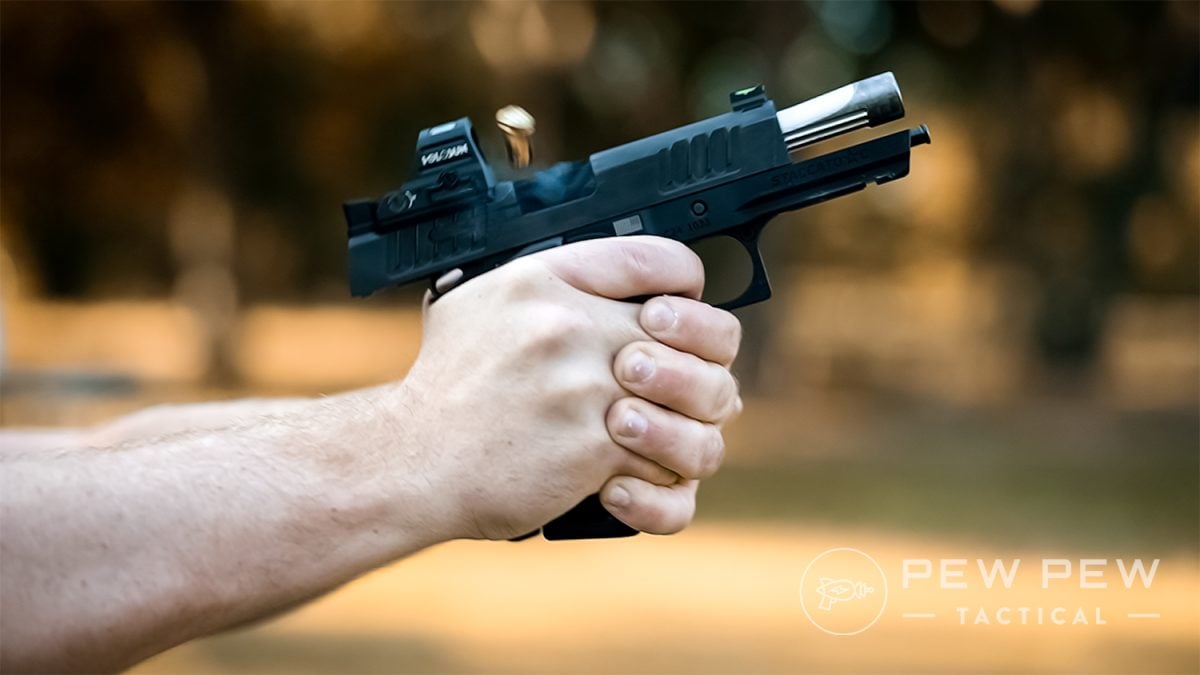
For someone searching for a reliable, durable 2011-type pistol that can take the abuse of high-round count training days or matches, the Staccato C will be able to keep up and help you excel.
What do you think of the Staccato C? Let us know in the comments below. To read up on more Staccato pistols, check out our reviews on the Staccato CS and P.






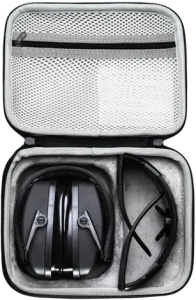
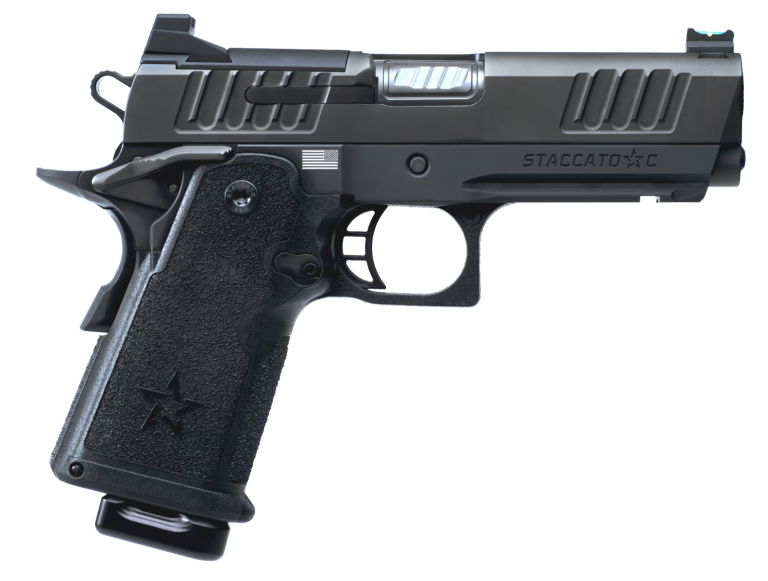













5 Leave a Reply
I had a Staccato C2 and sold it. I regretted it the day I sold it. So, a few months ago I decided to get another Staccato. I first thought of the C2 and the read comments and reviews about the C Do All….this is the most inaccurate firearm I’ve owned. I have about 900 rounds through it. I can’t short it with any accuracy. So I think it must be me….i pick up my Sig 229 and it so much more accurate. Then I pick up my CZ Orange and it crazy accurate at 25 yards. There has to be something wrong with me and the firearm. For the Price I’m very disappointed. Wish I had my C2 back!!! Any experience with inaccuracy of the C. I realize it’s a lighter firearm than the C2 and I’ve shot a CS without difficulty in accident.
Good article and in depth information, but how does it stack up against a Les Baer?
His accuracy tests are 50 yds, not a mere 7.
I guess I'll have to throw away all of my pistols, now that this is the best pistol ever created, and buy one or two of these er what were they called?
Good information, thank you. My brother is interested in this gun, and now I see why. He always has had an eye for quality. I will send this to him.
Nice review but for a 9 mm in that price range I rather take the Ed Brown Fueled M&P.